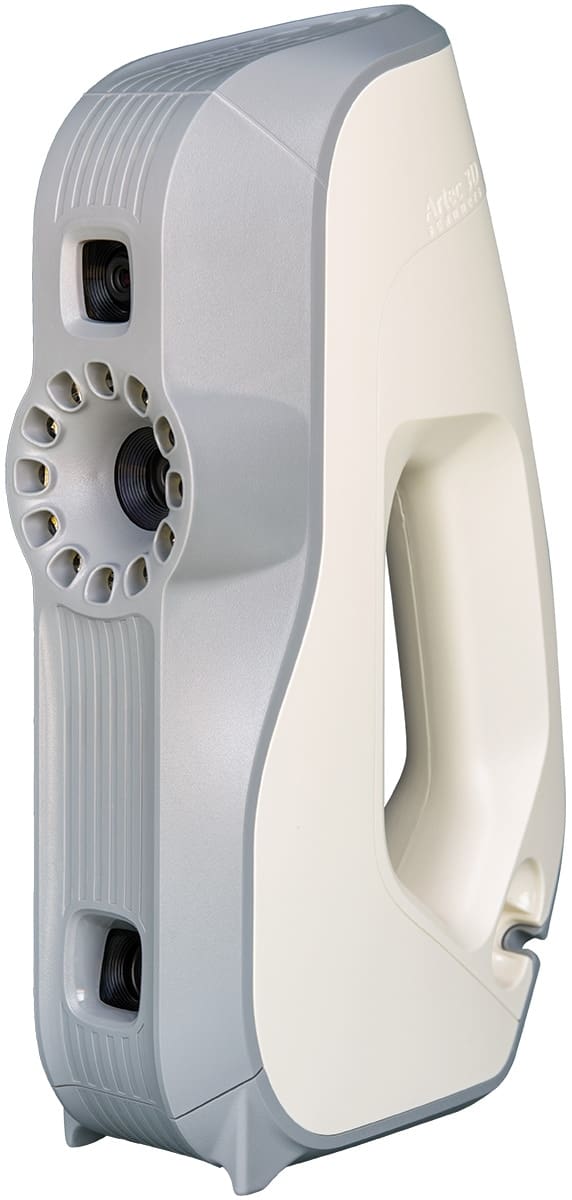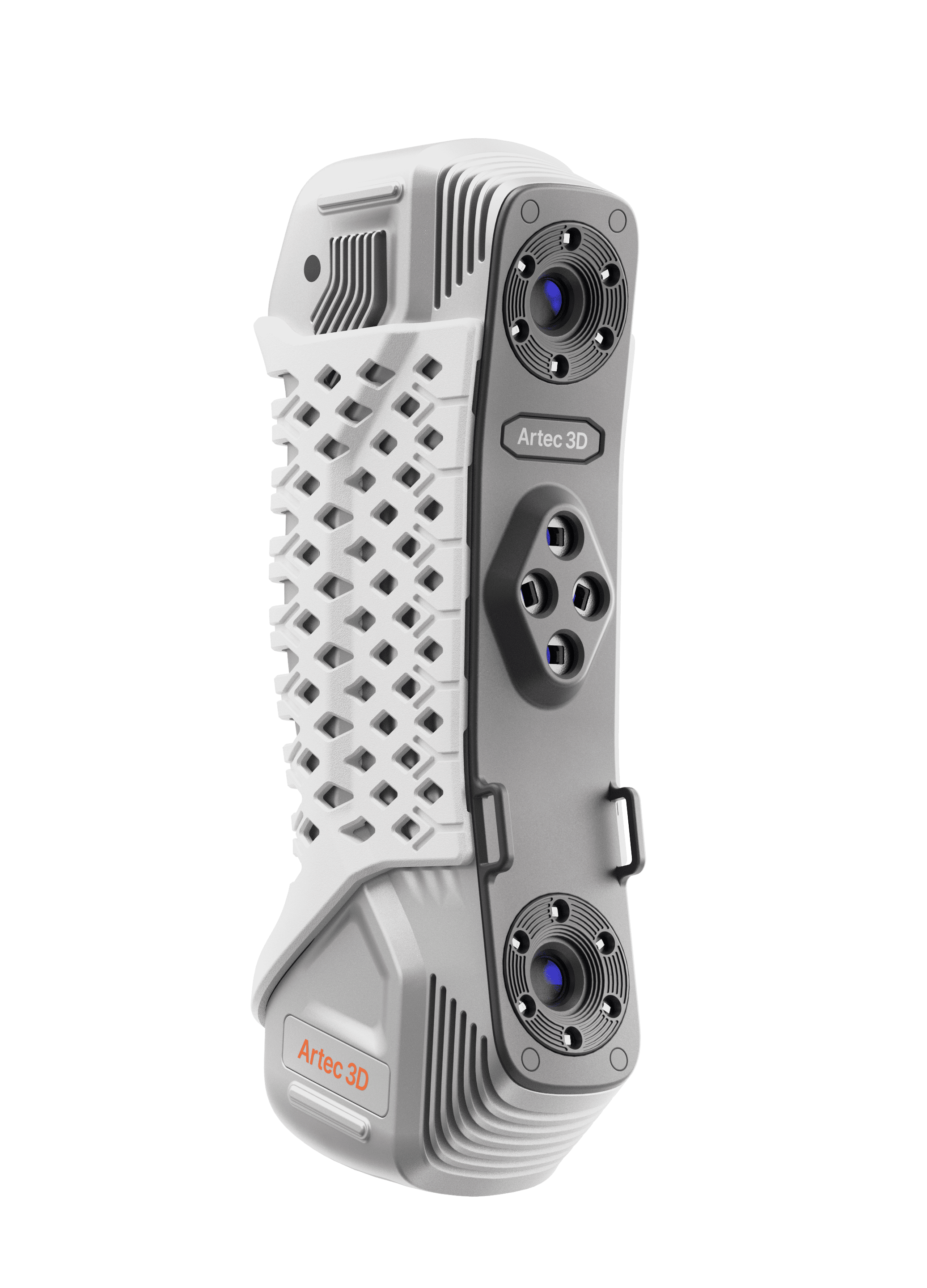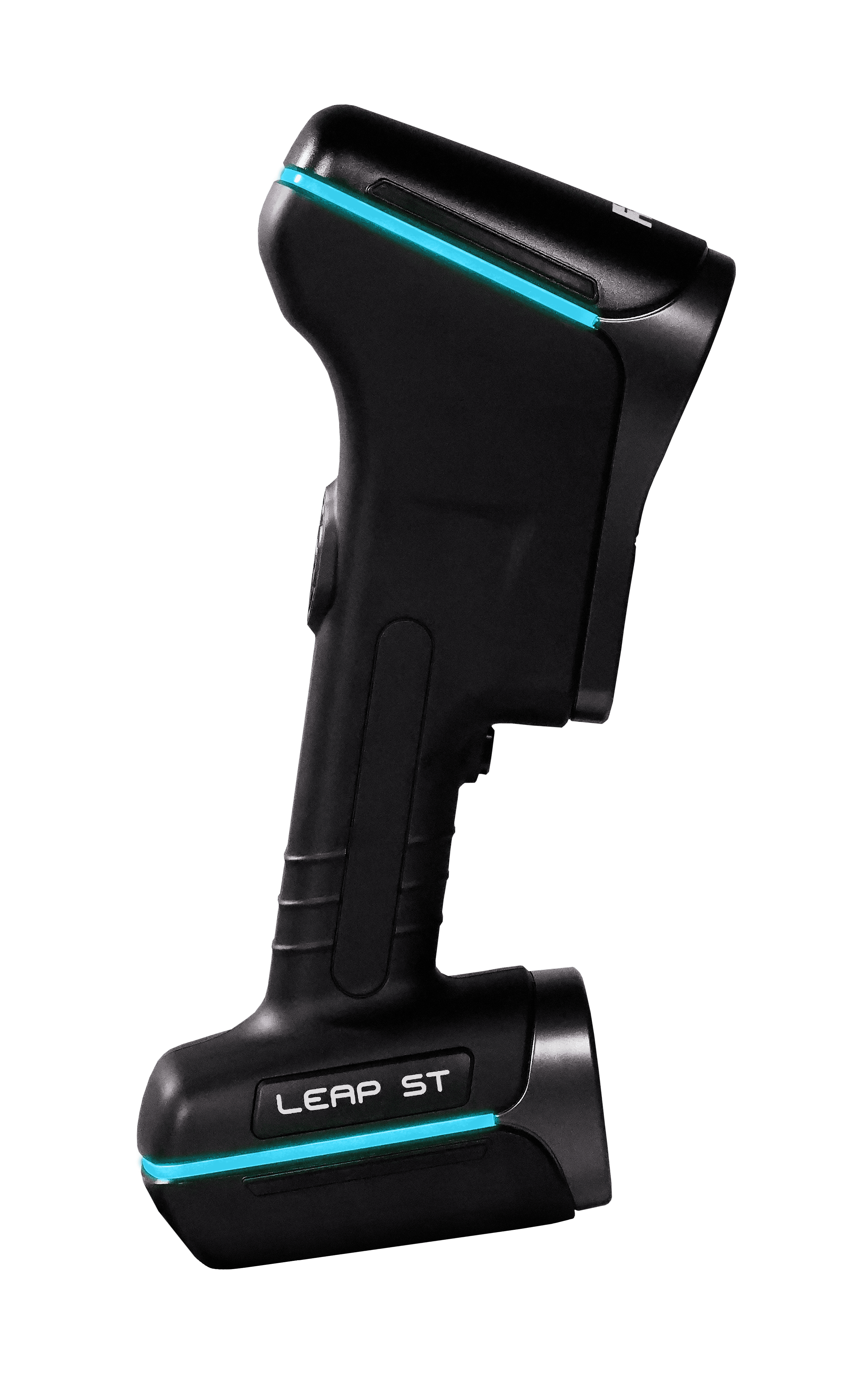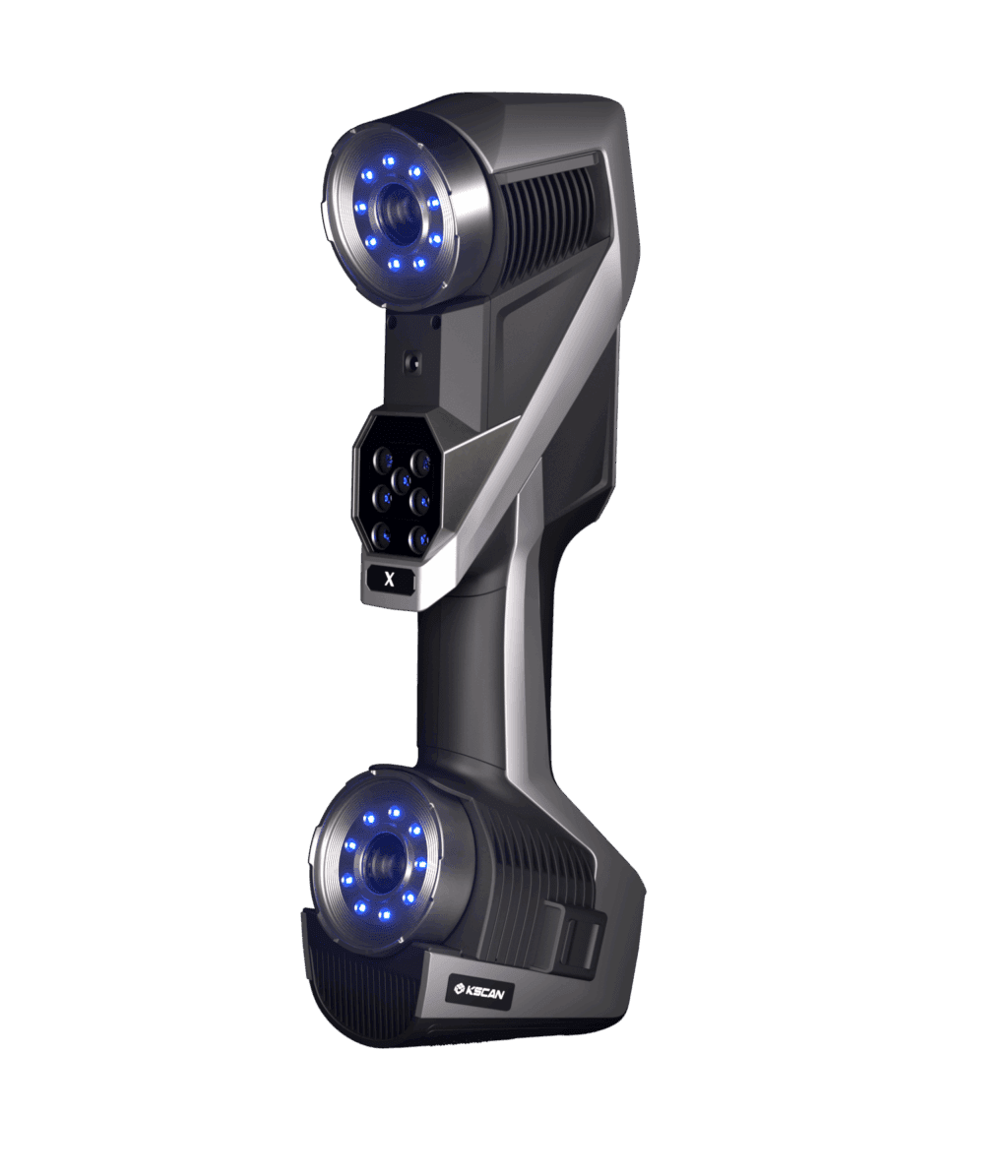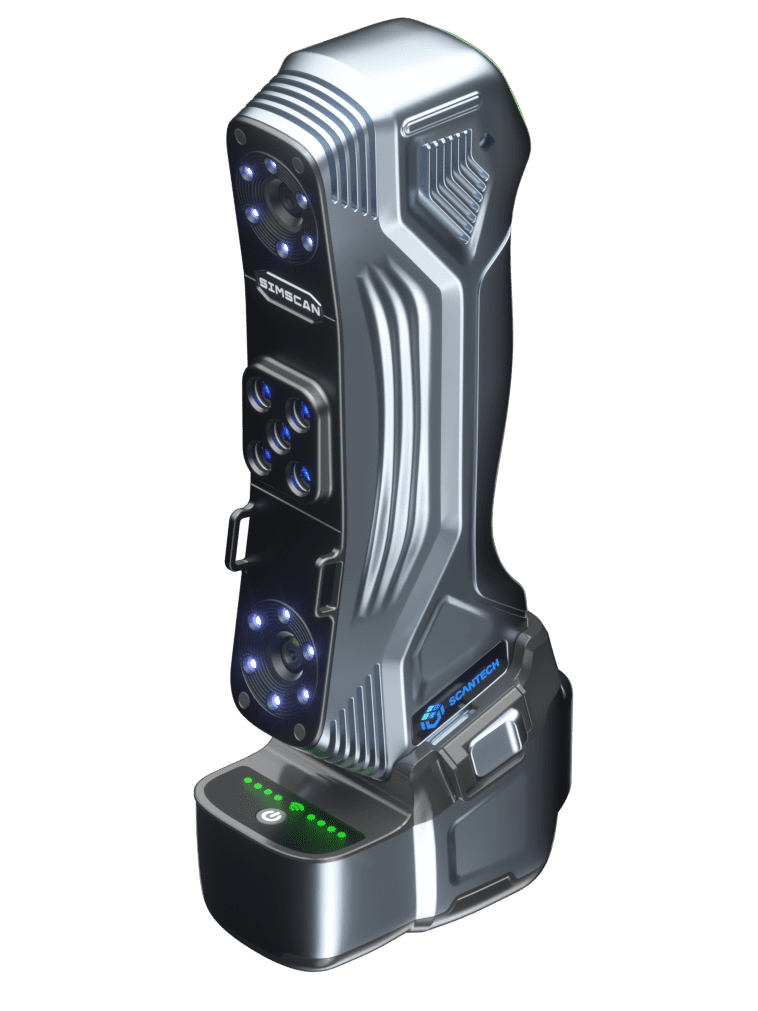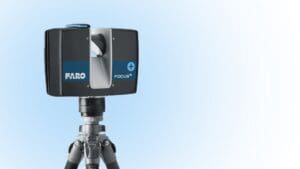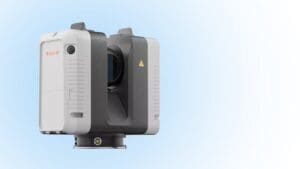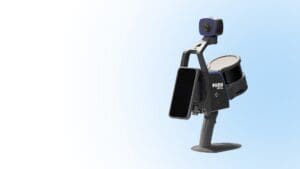Key applications for handheld 3D scanners include scanning components and complex parts in design and manufacturing, modeling body parts for surgical interventions and prosthetics, and replicating precise parameters for digital simulations. These materials include a variety of metals (machined, casting, polished, etc), plastics, composites, ceramics, human skin, organic material, etc. Shiny and black surfaces can be difficult to capture depending on the scanner. Transparent materials are hard or impossible to capture–regardless of the scanner.
Of course, we can provide tailored product advice, including white-structured light scanners for safe medical, zoological, and ecological applications, as well as blue laser scanners for more challenging dark and shiny surfaces
